Obviously I am only surmising what ancestry I believe the Nephites and Lamanite tribes ended up as. I have another blog coming that will describe more details. Below is a basic chart that I am refining that I know will be updated eventually. If you have suggestions I would love to hear from you. One of many sources I have used so far is Here

Algonquian (Lamanites) vs Iroquois (Nephites)
Just as the Book of Mormon tells the story of two main societies at war Nephites vs. Lamanites, there are many instances historically of the same thing as some are called the Iroquois vs. the Algonquian, or the Tallegwi (Iroquois) vs the Leni-Lape (Algonquian), or the Cherokee (Iroquois)vs the Delaware (Algonquian). These tribes seem to always be at war with each other. The names on the list below (Map 1, 2) each are various sub-tribes under various groups of people. Sometimes in history writers have used various names for the same group of people without understanding the differences.
Cherokee/Iroquois/Nephite?
“Cherokee, North American Indians of Iroquoian lineage who constituted one of the largest politically integrated tribes at the time of European colonization of the Americas. Their name is derived from a Creek word meaning “people of different speech”; many prefer to be known as Keetoowah or Tsalagi. They are believed to have numbered some 22,500 individuals in 1650, and they controlled approximately 40,000 square miles (100,000 square km) of the Appalachian Mountains in parts of present-day Georgia, eastern Tennessee, and the western parts of what are now North Carolina and South Carolina.
Traditional Cherokee life and culture greatly resembled that of the Creek and other tribes of the Southeast. The Cherokee nation was composed of a confederacy of symbolically red (war) and white (peace) towns. The chiefs of individual red towns were subordinated to a supreme war chief, while the officials of individual white towns were under the supreme peace chief. The peace towns provided sanctuary for wrongdoers; war ceremonies were conducted in red towns.” Source
“Iroquois, any member of the North American Indian tribes speaking a language of the Iroquoian family—notably the Cayuga, Cherokee, Huron, Mohawk, Oneida, Onondaga, Seneca, and Tuscarora. The peoples who spoke Iroquoian languages occupied a continuous territory around Lakes Ontario, Huron, and Erie in present-day New York state and Pennsylvania (U.S.) and southern Ontario and Quebec (Canada). That larger group should be differentiated from the Five Nations (later Six Nations) better known as the Iroquois Confederacy (self name Haudenosaunee Confederacy).
As was typical of Northeast Indians before colonization, the Iroquois were semisedentary agriculturists who palisaded their villages in time of need. Each village typically comprised several hundred persons. Iroquois people dwelt in large longhouses made of saplings and sheathed with elm bark, each housing many families. The longhouse family was the basic unit of traditional Iroquois society, which used a nested form of social organization: households (each representing a lineage) were divisions of clans, several clans constituted each moiety, and the two moieties combined to create a tribe.
Groups of men built houses and palisades, fished, hunted, and engaged in military activities. Groups of women produced crops of corn (maize), beans, and squash, gathered wild foods, and prepared all clothing and most other residential goods. After the autumn harvest, family deer-hunting parties ranged far into the forests, returning to their villages at midwinter. Spring runs of fish drew families to nearby streams and lake inlets.
Kinship and locality were the bases for traditional Iroquois political life. Iroquois speakers were fond of meetings, spending considerable time in council. Council attendance was determined by locality, sex, age, and the specific question at hand; each council had its own protocol and devices for gaining consensus, which was the primary mode of decision-making.
The elaborate religious cosmology of the Iroquois was based on an origin tradition in which a woman fell from the sky; other parts of the religious tradition featured deluge and earth-diver motifs, supernatural aggression and cruelty, sorcery, torture, cannibalism, star myths, and journeys to the otherworld. The formal ceremonial cycle consisted of six agricultural festivals featuring long prayers of thanks. There were also rites for sanctioning political activity, such as treaty making.
Warfare was important in Iroquois society, and, for men, self-respect depended upon achieving personal glory in war endeavours. War captives were often enslaved or adopted to replace dead family members. Losses to battle and disease increased the need for captives, who had become a significant population within Iroquois settlements by the late 17th century.” Iroquoian
The Siouan Language
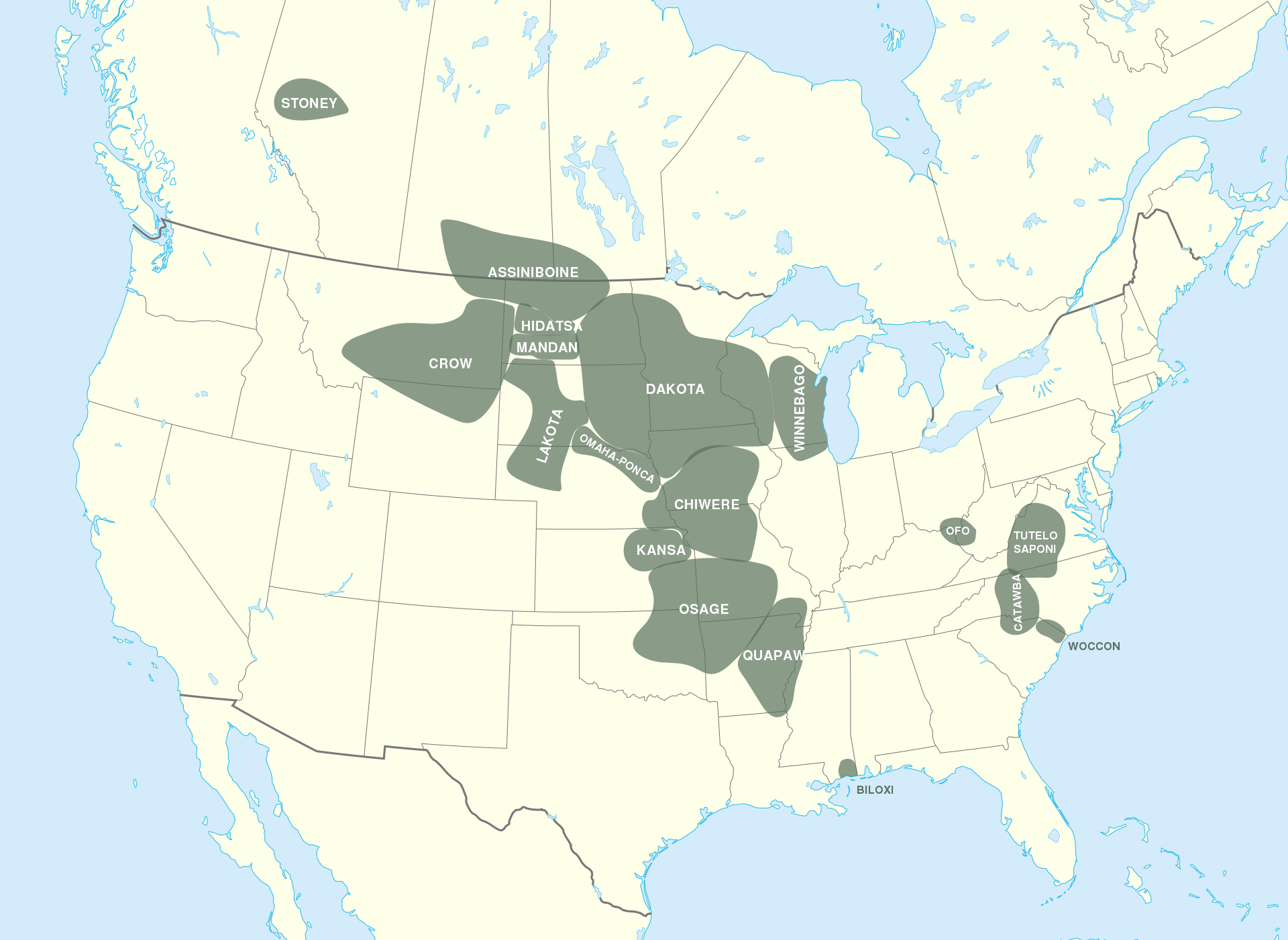
Completely different from the Algonquian and the Iroquois Language Group are the Siouan and the Muskogean Group.
There is obvious mixture between many of these language groups that are part of the Nephites, Lamanites, Mulekites and even the Jaredites, but that is not the purpose of this article.
“Siouan or Siouan–Catawban is a language family of North America that is located primarily in the Great Plains, Ohio and Mississippi valleys and southeastern North America with a few other languages in the east.
Authors who call the entire family Siouan distinguish the two branches as Western Siouan and Eastern Siouan or as Siouan-proper and Catawban. Others restrict the name “Siouan” to the western branch and use the name Siouan–Catawban for the entire family. Generally, however, the name “Siouan” is used without distinction.” Wikepedia
Muskogean Language Group
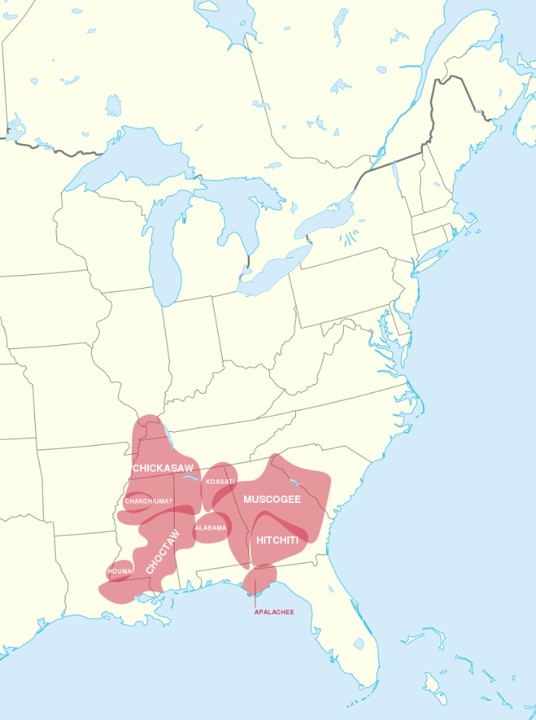
The Muskogean family consists of six languages that are still spoken: Alabama, Chickasaw, Choctaw, Creek-Seminole, Koasati, and Mikasuki, as well as the now-extinct Apalachee, Houma, and Hitchiti (the last is generally considered a dialect of Mikasuki). “Seminole” is listed as one of the Muskogean languages in Hardy’s list, but it is generally considered a dialect of Creek rather than a separate language, as she comments.
The major subdivisions of the family have long been controversial, but the following lower-level groups are universally accepted: Choctaw–Chickasaw, Alabama–Koasati, Hitchiti–Mikasuki, and Creek–Seminole.” Wikepedia
Algonquian (Lamanite) and Iroquois (Nephite) Groups
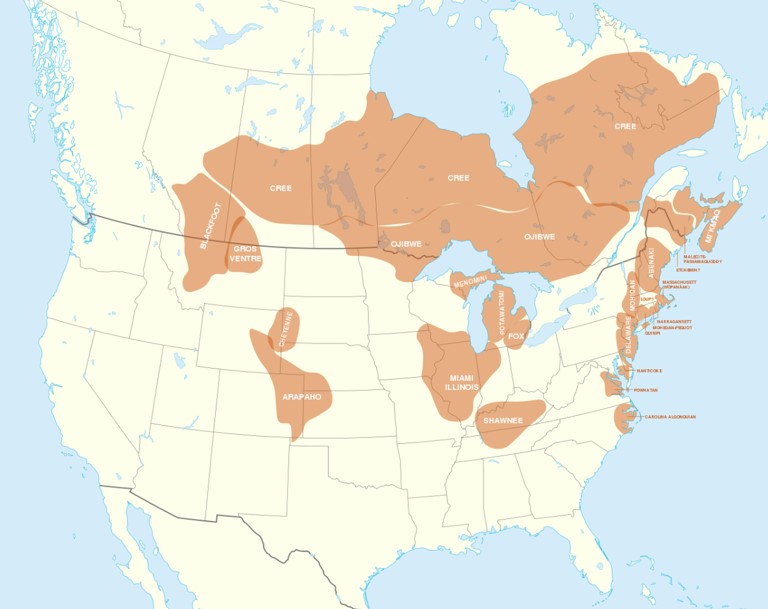
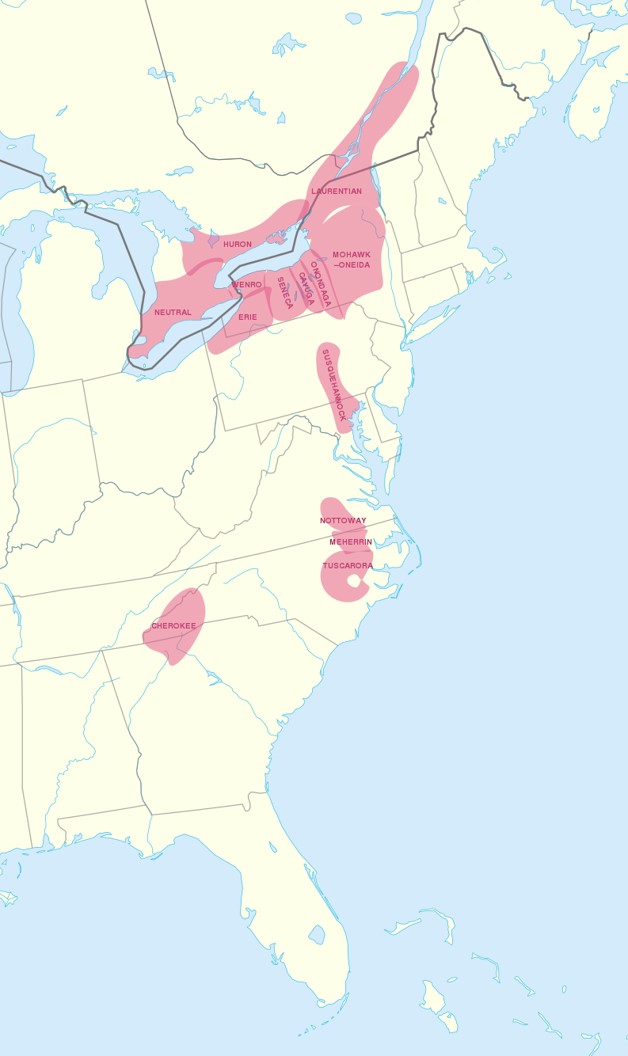
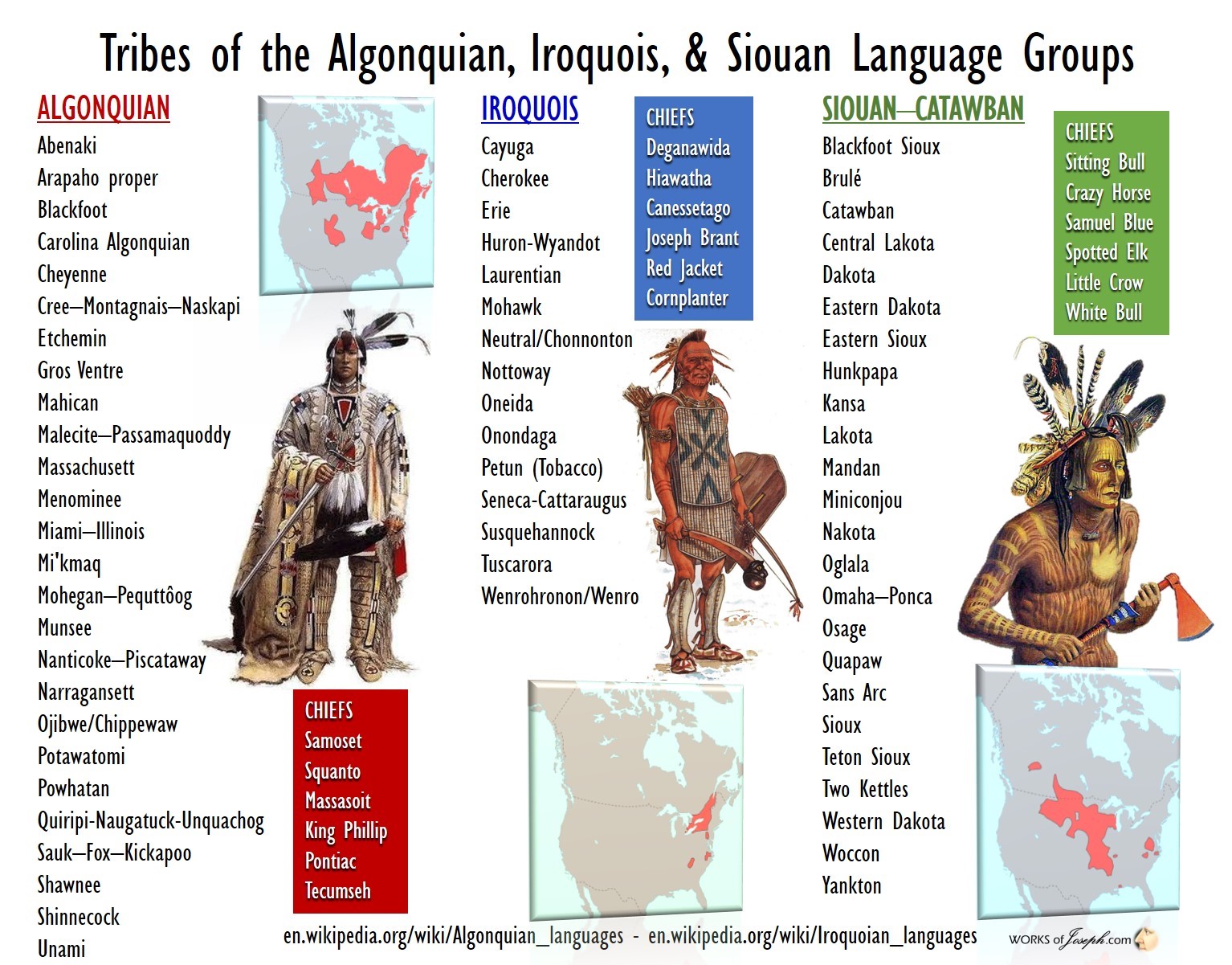
Alleghewi or Tallegwi
Alleghewi or Tallegwi, have given their name to the Alleghany River and Mountains, and were the mound-builders
Leni-Lape = Delaware = Chipewa = Miqmak = ALGONQUIAN!
Alleghewi = Tallegwi = Tsalagi = Cherokee = Allegheny = Onondaga= IROQUOIS!
“There can be no reasonable doubt that the Alleghewi or Tallegwi, who have given their name to the Alleghany River and Mountains, were the mound-builders. The destiny which ultimately befell the Mound-builders can be inferred from what was known of the fate of the Huron themselves in their final was with the Iroquois. The greater portion of the Huron people were exterminated, and their towns reduced to ashes. Of the survivors many were received and adopted among the conquerors. A few fled to the east and sought protection from France.” Archaeological History of Ohio: The Mound builders and Later Indians pg 438
“It may be considered as beyond dispute that the Cherokees are a branch or off-shoot of the Huron-Iroquois family. Their language proves it. “The striking fact has become evident that the course of the migration of the Huron-Iroquois family has been from eastern Canada, on the Lower St. Lawrence, to the mountains of northern Alabama.” Archaeological history of Ohio : The Mound builders and later Indians / by Gerard Fowke.
The Wabash Indians were primarily the Miami, Weas and Piankashaws, but also included Kickapoos, Mascoutens, and others.[Algonquian/I call Remaining Lamanites]. In that time and place, Native American tribes were smaller political units, and the villages along the Wabash were multi-tribal settlements with no centralized government. The confederacy, then, was a loose alliance of influential village leaders (sometimes called headmen or chiefs). In the 1780s, headmen of the Wabash Confederacy allied themselves with a larger, loose confederacy of Native American leaders in the Ohio Country and Illinois Country known as the Northwestern Confederacy, in order to collectively resist U.S. expansion after the American Revolutionary War. In 1786, a Wyandot [Iroquois/ I call a remaining Nephite] messenger named Scotosh warned Congress that the Wabash, Twightwee, and Miami nations would disrupt U.S. surveyors, and Congress promised reprisals if that occurred. This resistance movement culminated with the Northwest Indian War. The alliance with the Western Confederacy ended in 1792 with the Wabash Confederacy signed a treaty with the United States.” Wikipedia
This quote above could have been in reference to the many battles fought between the Lamanites and Nephites in this general area. (See Map Below) The area described in the article above is the area we would call the middle of the Land Zarahemla and the Land Bountiful with the Land Desolation being north of Bountiful. As a matter of fact, my maps show that the Wabash River could possibly be the division point of the Land Bountiful, east of the Wabash, and the Land Zarahemla west of the Wabash to the Mississippi River and beyond, to the Missouri River. The area of Lachoneus of the Book of Mormon and many other battles in Alma 2 and Alma 46 are probably likely just south of the Narrow Neck bordering on the land Zarahemla and the Land Bountiful on the Wabash River. That area of Missouri to Illinois, to Indiana to Ohio to Pennsylvania were all the direction of the last great battle of the Book of Mormon ending at Cumorah. Full Blog Here:

Native American Indians Time Periods
The Native American always held God, Christ, or the Great Spirit, as that great “One” God.
Read more about the reason for the various shapes of the pipes and how they were used. Why were these pipes so important to the Native Americans?

Great Spirit Appears to the Onondagas
“On the authority of some older inhabitants of Onondaga, New York, it is stated that on a ledge of rocks, about a mile south of Jamesville, (Near Syracuse and Oneida Castle) is a place which used to be pointed out by the Indians as a spot where the Great Spirit once came down and sat and gave good advice to the chiefs of Onondagas. That there are the prints of his hands and his feet, left in the rocks, still to be seen. In the former years the Onondagas used annually to offer, at this place, tobacco and pipes, and to burn tobacco and herbs as a sacrifice to the Great Spirit, to conciliate his favor and which was a means of preventing diseases.” Author L. Taylor Hansen He Walked the Americas
“Native accounts tell of his arrival [Christ] from the direction of the rising sun, after which he set up his priesthood among his followers known as the “Wau-pa-nu” (the spelling phonetic). They were said to have healed the sick and instituted new laws. Blood sacrifice was forbidden and replaced by the use of tobacco, today an important element in all traditional Native American ceremonies. Among many eastern tribes, East Star Man is regarded as the son of Great Spirit, the Creator.” Wayne May, Christ in North America.
The Name of Nephi
“JOSEPHUS SAYS the Egyptian called their Creator ‘Kneph,’ ‘Noub,’ or ‘Nour.’ Reynolds points out that ancient variants of the name of Nephi include Knephi, Kneph, Noub, Nouv, Knouphis, Nebo, Naba, Nechi, Necho and others. These variants are found in many of the American Indian languages.” George Reynolds, Commentary on the Book of Mormon
“NEPHI: This is also an Egyptian name, usually given as Knephi, and transliterated into Hebrew as Nebi. It means ‘prophet’ or one who speaks with God. The great Osiris, one of the Egyptian gods, was called Nephi or Knephi and the city in his honor was n-ph (vowels always had to be supplied). It is the city we know today as Memphis, located across the Nile from Cairo, but it is referred to by its original name of Noph (a variant of Nephi) in the writings of Hosea, Isaiah, and Jeremiah.” Treasures from the Book of Mormon, Volume One By W. Cleon Skousen
The Seat of the Iroquois
“Onondaga was, from the remotest times, the seat of the Iroquois government. Granting credence to the account of their own origin, on the high grounds or falls of the Oswego, (East of Fulton NY See map below) they had not proceeded far up the course of the widely gathered waters of this stream, when a portion of them planted their wigwams in this fertile region. Whatever was the cause of their migrating from their primary council fire, nothing was more natural than that, by pursuing this stream upward, they should separate into independent tribes, and by further tracing out its far spread forks, gradually expand themselves, as they were found by the discoverers and first settlers, over the entire area of western New-York. On reaching the grand junction of Three River Point (Phoenix, NY), a part went up the Seneca river, who subsequently dividing, formed the Senecas and Cayugas. The bands who took the eastern fork, or Oneida river, pushed forward over the Deowainsta, or Rome summit, into the first large stream, flowing east, and became the Mohawks. The central or Onondaga fork was chosen by the portion who, from the hill country (Onondaga) they first located in, took this name; and from them, the Oneidas, pursuing in fact the track of the Mohawks, were an off-shoot…”

Atotarho or Tah-totah or Chief or Sachem or King
“…The idea of a confederation was, it is believed, an old one with this people, for the very oldest traditions speak of something of this kind, among the lake and St. Lawrence tribes of older days. When the present league was formed, on the banks of the Onondaga lake, this central tribe had manifestly greatly increased in strength, and distinguished itself in arms, and feats of hunting and daring against giants and monsters… Most distinguished, however, above all others, east or west, was a leader of great courage, wisdom and address, called Atotarho…”
“A singular tradition may be here added. It is said that the XIIIth Atotarho reigned at Onondaga when America was discovered” (1414 AD) Aboriginal History, Antiquities and General Ethnology of Western New-York by Henry R. Schoolcraft
In speaking about the 13th Atotarho (or Sachem or Chief ) in the Iroquois tradition, we read also in the Book of Mormon. “And whoso should reign in [Nephi’s] stead were called by the people, ‘Second Nephi,’ ‘Third Nephi,’ and so forth…” (Jacob 1:11)
Tadodaho was said to be a warrior and primary chief of the Onondaga people. Depending on the speaker’s dialect and the writer’s orthography, other versions of the name include Adodarhoh, Atartaho, Atotarho, Tatotarho, Thatotarho, and Watatohtahro. In the 1883 work The Iroquois Book of Rites, edited by Horatio Hale, the term Atartaho is said to signify “entangled”. Wikepedia
“The temple registry page shown below is remarkable in that an Onondaga
Nation king was named King Tah-totah, then others that followed: King Tah to-tah 2, King Tah-to-tah 3…then on the next page, King Tah-to-tah 7 through …15, etc. This tradition of naming kings in respect and remembrance of a prior king follows the pattern of the early Nephite colony.” Annotated Book of Mormon David Hocking and Rod Meldrum page 101
Just like Tah-to-tah means Chief or Prophet to the Iroquois,
Nephi meant Chief or Prophet to the Nephites.

See my blog here titled, 85 NATIVE AMERICAN CHIEFS-BAPTIZED AT THE ST GEORGE TEMPLE
I personally believe there is great evidence pointing to the fact that the Iroquois or more specifically the Onondaga Tribe are the closest people to having Nephite and or Lamanite blood in them. Remember also the Cherokee are another good possibility who originally lived near Chattanooga, Tennessee. The Cherokee are also from the Iroquois Culture.
See my blog here: THE ONANDAGA-JOSEPH SMITH’S INDIANS
Manasseh and Ephraim grew together upon this American continent
“I am Mormon, and a pure of Lehi. I have reason to bless my God and my Savior Jesus Christ, that he brought our fathers out of the land of Jerusalem” 3 Nephi 5:20
“1 Nephi 7:2. Ishmael Is of Ephraim. The Book of Mormon is sometimes referred to as the “stick of Joseph” (Ezekiel 37:19) or the “stick of Ephraim” (D&C 27:5). Lehi was a descendant of Manasseh (see Alma 10:3) and Ishmael was a descendant of Ephraim. The prophecies of Jacob (see Genesis 48:16; 49:22) were fulfilled as Ishmael’s family (Ephraim) came to the American continent with Lehi (Manasseh).
Elder Erastus Snow (1818–88) of the Quorum of the Twelve Apostles discussed the importance of Ishmael’s lineage: “Whoever has read the Book of Mormon carefully will have learned that the remnants of the house of Joseph dwelt upon the American continent; and that Lehi learned by searching the records of his fathers that were written upon the plates of brass, that he was of the lineage of Manasseh. The Prophet Joseph informed us that the record of Lehi was contained on the 116 pages that were first translated and subsequently stolen, and of which an abridgment is given us in the first Book of Nephi, which is the record of Nephi individually, he himself being of the lineage of Manasseh; but that Ishmael was of the lineage of Ephraim, and that his sons married into Lehi’s family, and Lehi’s sons married Ishmael’s daughters, thus fulfilling the words of Jacob upon Ephraim and Manasseh in the 48th chapter of Genesis, which says: ‘And let my name be named on them, and the name of my fathers Abraham and Isaac; and let them grow into a multitude in the midst of the land.’ Thus these descendants of Manasseh and Ephraim grew together upon this American continent” (in Daniel H. Ludlow, A Companion to Your Study of the Book of Mormon [1976], 199). LDS Study Manual
I believe Joseph Smith was a pure descendant of Ephraim who obtained the Stick of Ephraim (D&C 27:5) from Mormon, who was a direct descendant of Lehi. Both sons of Joseph of Egypt came together is a significant way in regard to that sacred record here in the United States, which is the Promised Land of the Book of Mormon. Elder Perry said, “The United States is the promised land foretold in the Book of Mormon—a place where divine guidance directed inspired men to create the conditions necessary for the Restoration of the gospel of Jesus Christ.” Elder L. Tom Perry Ensign Dec. 2012
Hebrew from Eber to Mulek Joined Joseph of Israel in America
Remember how important the Tribe of Judah was to the Lord which is His lineage through David. The People of Zarahemla (Mulekites) were of Judah as was Ammon of the Book of Mormon who later helped to free King Limhi and his people from the Lamanites and bring them back to Zarahemla. Mosiah 22
Just think, just as Joseph Smith (Ephraim) and Mormon (Lehi) represented the tripe of Judah (Christ), the Nephites who are of Joseph joined up with the people of Zarahemla who are of Judah the brother of Joseph of Israel.
Mulek: “A son of the Old Testament king Zedekiah (about 589 B.C.). The Bible records that all the sons of Zedekiah were slain (2 Kgs. 25:7), but the Book of Mormon clarifies that Mulek survived (Hel. 8:21).
Zarahemla was a descendant of Mulek, Mosiah 25:2.
The people of Mulek joined the Nephites, Mosiah 25:13.
The Lord brought Mulek into the land north, Hel. 6:10.
All of Zedekiah’s sons were slain except Mulek, Hel. 8:21.” LDS Study Guide
Ammon, Descendant of Zarahemla (Hebrew from Eber)
Ammon: “In the Book of Mormon, a strong and mighty man who led an expedition from Zarahemla to the land of Lehi-Nephi (Mosiah 7:1–16). He was shown ancient records and explained what a seer is (Mosiah 8:5–18). He later helped to free King Limhi and his people from the Lamanites and bring them back to Zarahemla (Mosiah 22).” LDS Study Guide
Burial of Mormon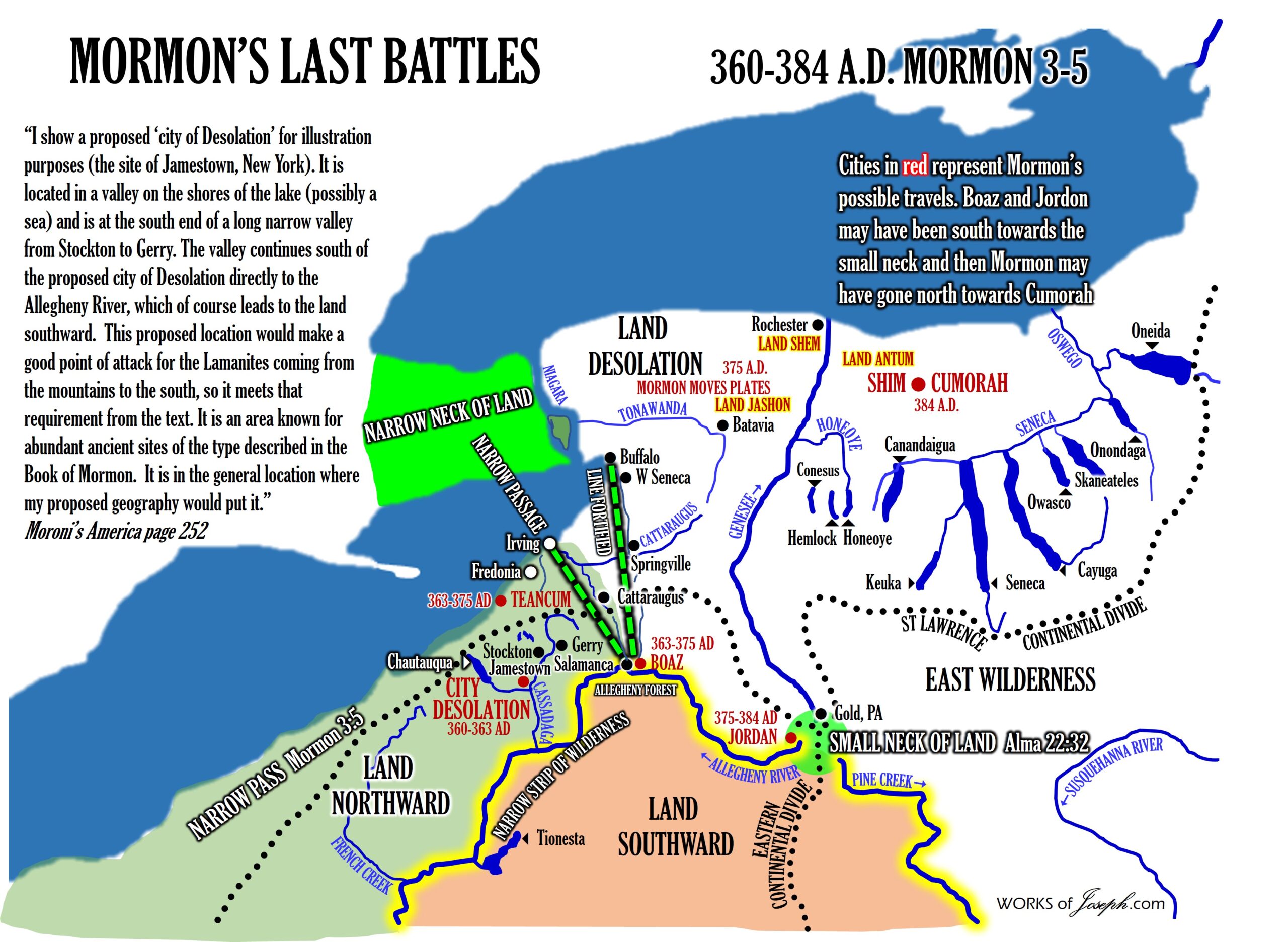
“When serving as Mission President to the Seminole Indians in Central Florida, Murray J. Rawson was teaching a group of the tribe about the Book of Mormon when he was interrupted by their Chief, saying: “We had a war long ago with a light skinned people around the Great Lakes. We conquered them but we had so much respect for their warrior chief that we buried him at the mouth of the Oswego River that is in New York State. We don’t discuss this very much because it is an embarrassment to us. President Rawson then asked why this is an embarrassment, and the Chief replied, “ Our history is written on metal plates and buried in a hill in New York, but we don’t know which hill!” (Talk given to missionaries in training at the MTC, Provo, Utah 1979, by President Murray J. Rawson). This talk has a poor audio but you can find it here: (See Map Above for Mormon’s burial place on Lake Ontario at the mouth of the Oswego River)
Dating and Purpose of the Ancient Pipes
“In the first few years following the creation of the [Smithsonian] Bureau, the debate began to escalate regarding the interpretation of the many bird and animal carvings that were coming out of the mounds. Many artifacts being recovered from the Hopewell and Adena mounds appeared to be birds and mammals that only exist in the southern tropical regions of the world. M. C. Read in Archaeology of Ohio, pointed out: “Of the animal that is supposed to represent the seacow, seven carvings have been found. This inhabitant of tropical waters is not met in the higher latitudes of North America.”162 Many carvings of birds, and animals from tropical climates such as the manatee, large seal-like animals, elephants and tropical birds like the big-beaked toucan and parrot-like carvings were found, all of which were raising questions as to a possible connections with peoples from these tropical regions.
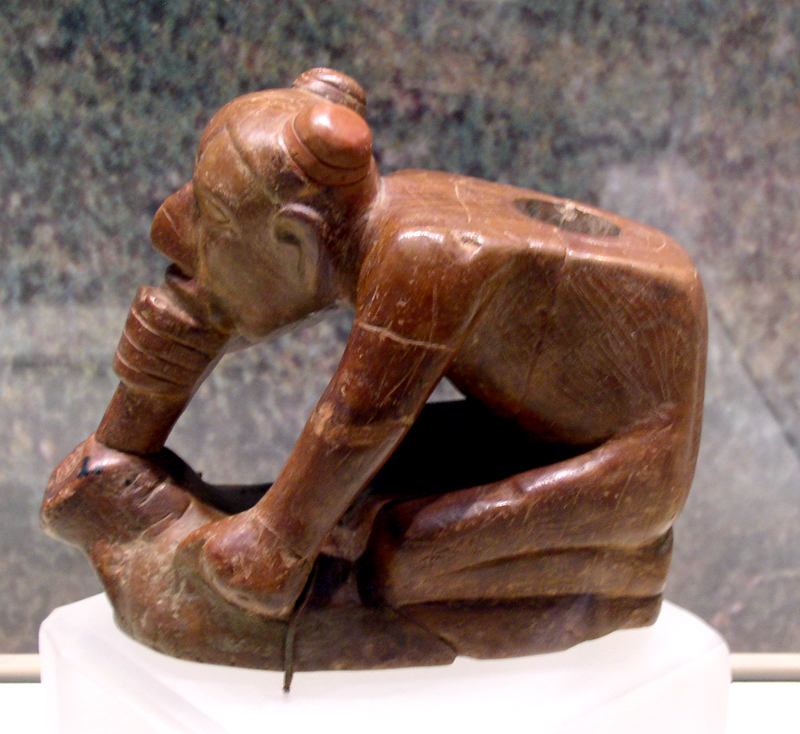


The Third Annual Report of the Bureau of Ethnology, published in 1884, included for the first time a brief section entitled, Explorations in Mounds. It discusses work done in West Virginia, Ohio, Tennessee, Arkansas, and Florida, …by 1883, Cyrus Thomas’s Division of Mound Explorations included three full-time assistants and five temporary helpers, and work was under way in Tennessee, Arkansas, Illinois, Iowa, Georgia, Alabama, North Carolina, and Missouri. Some 4,100 artifacts had been collected for the National Museum in Washington. They included elegant pipes and pendants of polished stones and such humbler things as hoes, scrapers, diggers, axes, and hammers. Some of the mounds had yielded clear evidence of contact with European civilizations: bits of hammered iron in North Carolina; silver bracelets, brooches, and crosses in Wisconsin, and fragments of copper plate bearing the marks of machinery in Illinois. All this served to back Powell’s original belief that “a few, at least, of the important mounds of the valley of the Mississippi had been constructed and used subsequent to the occupation of the continent by Europeans, and that some at least, of the mound builders were therefore none other than known Indian tribes.163 Complete blog here

In the early annual reports of the Bureau of Ethnology public documents, one finds that it is not what they included in their reports, but what they have obviously excluded. The discussions and findings that were explored and addressed in the Bureau’s publications followed a prescribed agenda, pointing out that Indian populations and America’s ancient cultures were never highly advanced, with little to no discussions as to their cultural achievements. Lost from these studies were acknowledgements that the Indians were at one time more advanced than first perceived. As evidence in the construction of their communities, fortifications, smelting of metals and their construction of watercrafts capable of navigating the many rivers and lakes of the northeast. Also distinctively missing were the findings that show that these ancient mound-building cultures possessed knowledge of mathematics, astronomy, written language and engineering, as shown in the building of earthwork structures, which were comparable to any achievements of any ancient culture in the world of their day.
So where did the Mound Builders’ knowledge of these skills come from and why was so much of this knowledge not celebrated or passed on to our day and to their descendants?
“The fourth Annual Report contains an essay by Garrick Mallery on the picture-writing of the Indians, in which he discusses the various inscribed tablets found in mounds. Most of these he dismisses as frauds.” Such was the case of the Holy Stones found by David Wyrick of Newark, Ohio,) “…discovered in 1860 a tablet bearing on one side a truculent likeness of Moses with his name in Hebrew.”164 [Editors note: These so-called hoaxes are also pushed by the Scholars and Intellects that believe in the Mesoamerican setting for the Book of Mormon]. It is interesting to note that these early men of the Bureau of Ethnology described and defined these artifacts as picture-writings of the Indians or frauds without giving any real consideration to the potential of other visitor, to the America’s prior to Columbus.” Lost Civilizations of North America Steve Smoot Chapter 18, Learning from America’s Antiquities
_______________________
162 Read, 48.
163 Silverberg, The Mound Builders, 136-137.
164 Silverberg, 137-138.






